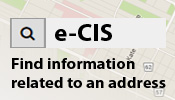Resources and forms
Annual Reports
- 2023 Traffic Signals Branch Annual Report
- 2022 Traffic Signals Branch Annual Report
- 2021 Traffic Signals Branch Annual Report
- 2020 Traffic Signals Branch Annual Report
- 2019 Traffic Signals Branch Annual Report
Answers to requests for signs
From time to time, the Public Works Department receives requests for installation of “Not A Truck Route” signs. There is a network of streets in the City of Winnipeg forming the City’s Truck Route system. All other streets are “Not a Truck Route”. Truck Routes, as specified in The City of Winnipeg Traffic By-law #1573/77, and as shown in the 2001 City of Winnipeg Truck Route Map, are all identified with appropriate signing such as Route Number signs (e.g. Route 85) and/or a sign with a silhouette of a truck with a green ring on a white background. Such a system of signing only those streets that are "Truck Routes" minimizes the cost of installation and maintenance of signs, is readily understandable by truck operators, and is enforceable by the Police. "Not a Truck Route" signs are reserved for use at intersections where a Truck Route ends.
Streets such as Portage Avenue, Main Street, Lagimodiere Boulevard, Kenaston Boulevard, Keewatin Street, McPhillips Street, Erin Street and Wall Street, etc. and many streets in the Central Business District, are Truck Routes. These established Truck Routes are intended to minimize the intrusion of truck traffic onto residential streets. In general, the Truck Route system in Winnipeg has provided an effective system of regulating truck traffic for over three decades.
According to the Traffic By-law, operators of trucks may use a portion of street that is not a Truck Route, provided that it is the shortest distance to and from the point of origin/destination and the nearest Truck Route. If trucks are destined from a Truck Route and travel on streets not identified as a Truck Route without a destination on that street, the driver is traveling illegally.
Posting "Not a Truck Route" signs may leave truck operators with the impression that any other streets not signed as "Not a Truck Route" are Truck Routes. Such a system of dual signing would be confusing and may compromise the ability of the Police to obtain a conviction for the illegal use of a street by a truck operator under the Traffic By-law. For these reasons, posting "Not a Truck Route" signs is not only unnecessary, but also inappropriate, and therefore, is not recommended
Section 122(1) of the Highway Traffic Act provides the following: “…no person shall stop, stand or park a vehicle: within an intersection or within 3 metres thereof*… or within 9 metres upon the approach to any stop sign…”. These provisions can be enforced whether there is a No Parking sign or not. Generally, the Public Works Department does not install No Parking signs to clear the corners at intersections of two non-Regional streets unless there is a demonstrated collision problem, it is a school bus route (to allow the long buses room to maneuver), refuse vehicles have trouble maneuvering around the corner, there is a horizontal curve in the roadway or there is a signed and marked crosswalk at the intersection. It would be cost prohibitive to install No Parking/No Stopping signs at every corner in the city and to selectively sign some corners and not others could be confusing to drivers as to where parking is prohibited. Also, when these signs appear at one location, they tend to result in more requests for similar signs at other nearby locations and ultimately could lead to a proliferation of signs on the streets.
*Parking is prohibited within 3 metres from the property line. Boulevards on residential streets typically range from 5.0 to 6.2 metres, resulting in a “clear zone” of 8.0 to 9.2 metres.

